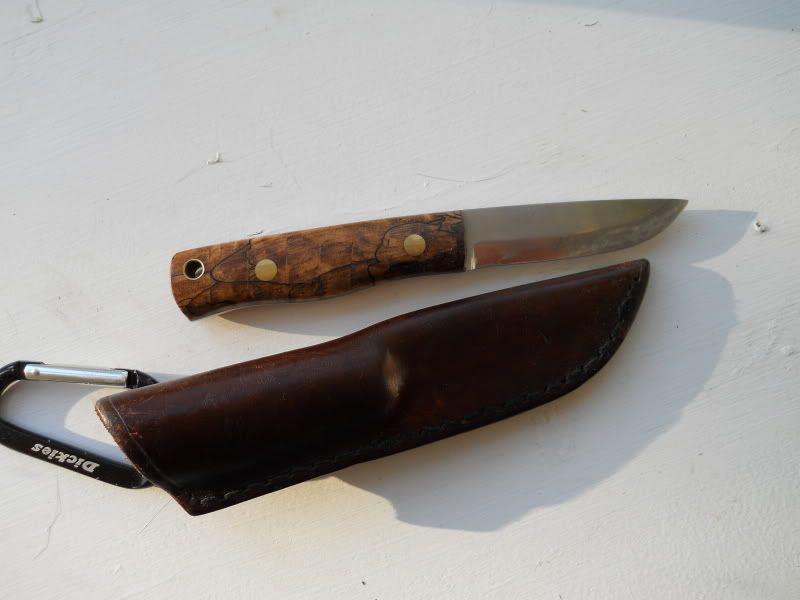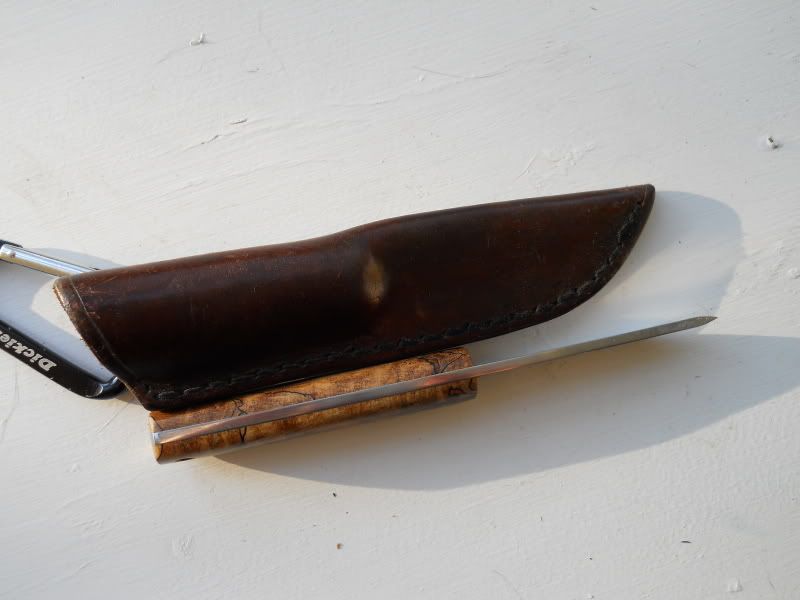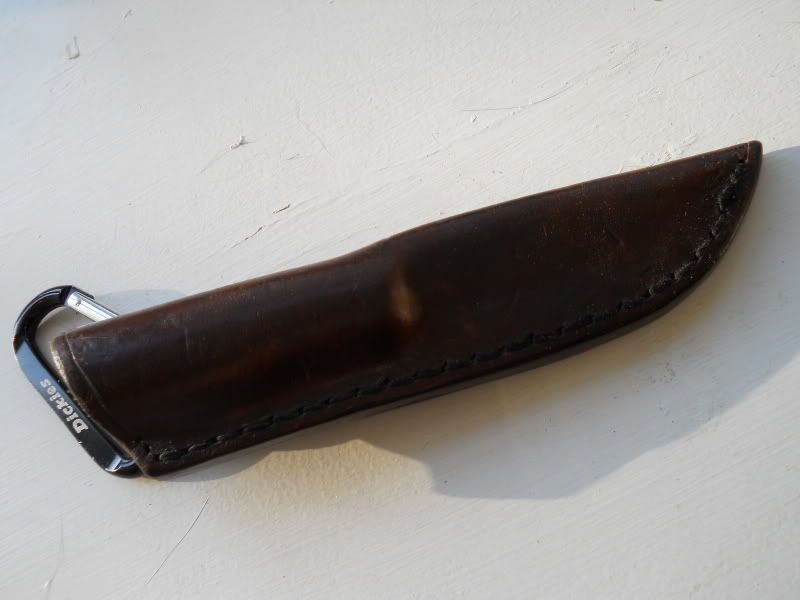Definition of full tang:
A
full tang means that the grip conforms to the shape and follows the outline of the tang, which is a solid piece of metal (typically steel). It is a single piece of metal from tip to base but the hilt is usually encased. Scales (flat pieces of handle material, like stag, wood, or synthetics) may be affixed to the tang with rivets or pins. Alternately, the tang may be wrapped with braided cord or
paracord. Injection-molded rubber (Kraton) or plastic (Zytel) are other grip options. A full tang generally implies a tough and durable sword or knife hilt, provided the steel has been properly heat treated and is not too hard (the harder it is, the more brittle it is). This method of production means that the sword or knife is stronger as it is a solid construction rather than a blade fixed to a base which can come off through wear or contact.
The F1 is in fact a full tang. Visibility of the tang between the scales or handle has absolutely nothing to do with whether its full or stick. Perhaps thats a definition that differs between the UK and North America. The cheapy Mora knife that Mors likes to use is a stick tang, also known as a rat tail tang.
Full tang for me all the time, every time. Should the handle of a stick tang knife break or splinter its practically useless. A full tang could still be used easily.




